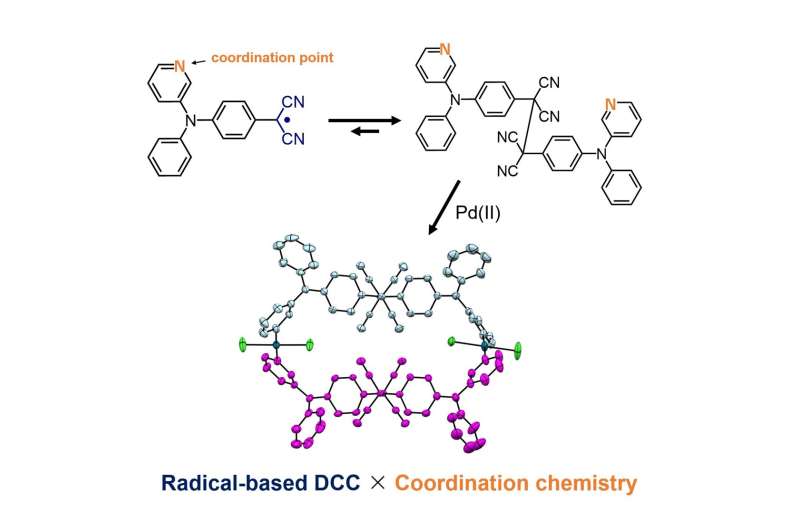This article has been reviewed according to Science X's editorial process and policies. Editors have highlighted the following attributes while ensuring the content's credibility:
fact-checked
peer-reviewed publication
trusted source
proofread
Novel combination of two reactions creates new molecule

A research group led by Professor Hideki Fujiwara and Associate Professor Daisuke Sakamaki from the Graduate School of Science at Osaka Metropolitan University succeeded, for the first time, in synthesizing a new molecule using a novel combination of dynamic covalent chemistry, in which organic radicals couple and dissociate reversibly, and coordination chemistry, which binds radicals to metal ligands. The study shows that the two types of reactions work without inhibiting each other.
"This research was based on a very simple idea of combining two types of reactions," stated Professor Sakamaki. "However, it was not clear if these reactions could coexist because they are so different in nature. Our results are expected to contribute to the development of new synthetic components for functional materials, such as sensing materials and porous materials."
The study findings were published in Angewandte Chemie International Edition.
More information: Hiroki Hasegawa et al, A Dicyanomethyl Radical Conjugated with a Pyridylamino Group: Combining Radical‐based Dynamic Covalent Chemistry and Coordination Chemistry, Angewandte Chemie International Edition (2023). DOI: 10.1002/anie.202302498
Journal information: Angewandte Chemie International Edition
Provided by Osaka Metropolitan University



















